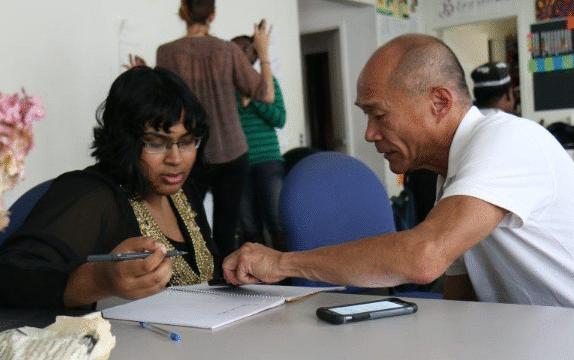Education for All means to you and the community you
want to serve. For some, it may focus on improving access to schools
in rural areas. For others, it might mean offering adult literacy programs, creating after-school tutoring support, or providing school supplies for underprivileged children. A clear purpose will not only guide your actions but will also help others understand and support your mission.
Spend time researching the educational needs in the area where you plan to work. Are there barriers related to finances, transportation, or cultural expectations? Is there a shortage of qualified teachers or materials? Listening to community members will give you insight into what is truly needed and prevent solutions that may look good on paper but fail to address real challenges.
Building a Supportive Team
No initiative can succeed on the efforts of one person alone. Education is a community effort, and having a team of people who share your vision makes the work more effective and sustainable. Your team may include teachers, local leaders, parents, students, volunteers, or professionals who have skills in fundraising, communications, or project management.
When building your team, seek diversity in skills and perspectives. An experienced teacher can guide curriculum development, while a local business owner may help with sponsorship or in-kind donations. A student might share ideas about what learning resources are most useful. By combining strengths, your initiative gains resilience and creativity.
Creating a Plan of Action
Once you have a clear purpose and a team, the next step is to create a plan. This does not need to be a complicated document, but it should outline your goals, strategies, and timeline. For example, if your initiative is focused on providing school supplies, your plan might include steps such as organizing a donation drive, partnering with local businesses, identifying students in need, and distributing the supplies before the school year begins.
A good plan also anticipates potential challenges. What if donations are fewer than expected? What if transportation to a rural village is more costly than planned? Considering these questions early helps you prepare backup solutions. Keep the plan flexible, since conditions and needs can change over time.
Securing Resources
Resources are essential for any initiative, whether they are financial, material, or human. Many people hesitate to start a project because they feel they need a large budget. In reality, many impactful initiatives begin with modest resources and grow over time.
Funding can come from a variety of sources, such as small community fundraisers, grants, or partnerships with nonprofit organizations. Local businesses may be willing to contribute by donating supplies, offering discounts, or lending space for events. Volunteers are another invaluable resource. College students, retired teachers, or parents with free time can all contribute in ways that extend the reach of your work.
Transparency is important when handling resources. Keeping clear records of donations and expenses builds trust with supporters and ensures accountability.
Engaging the Community
An Education for All initiative thrives when the community is fully engaged. This means involving families, local leaders, and educators in both planning and implementation. When people feel ownership of the initiative, they are more likely to support and sustain it.
One way to strengthen engagement is through open communication. Hold community meetings where everyone can share ideas and concerns. Celebrate successes together, such as the first group of students completing a program or the distribution of new learning materials. Acknowledging collective achievements fosters pride and motivation.
Cultural sensitivity is also vital. Every community has its traditions, values, and perspectives about education. Respecting these differences while promoting the benefits of learning helps build trust and avoids misunderstandings.
Implementing Programs
With planning and community support in place, it is time to implement your initiative. Start small and focus on quality. For example, rather than launching a large literacy program immediately, begin with a pilot class for a small group of learners. This allows you to test methods, gather feedback, and make adjustments before scaling up.
Implementation requires patience. Progress may be slower than expected, and there may be setbacks along the way. What matters is consistency. Even small steps, like holding regular study sessions or providing a few scholarships, can grow into larger accomplishments over time.
Measuring Impact
To ensure your initiative is making a difference, it is important to measure results. Impact can be tracked in many ways, depending on your goals. If your focus is on literacy, you may look at the number of learners who complete a course and improve their reading levels. If you provide school supplies, you can track how many students receive them and how it affects attendance rates.
Gathering feedback directly from participants is especially valuable. Their experiences will show you what is working well and what could be improved. Sharing these results with supporters also demonstrates accountability and encourages continued involvement.
Expanding and Sustaining the Initiative
Over time, a successful initiative often grows. Expansion may mean reaching more students, offering new types of programs, or extending to new communities. Sustaining this growth requires careful planning. Consider long-term funding strategies, such as partnerships with larger organizations, government support, or recurring community events that generate income.
Training local leaders and volunteers is another way to sustain the initiative. If knowledge and responsibility are shared widely, the project can continue even if the original founders move on. Education for All is not a one-time effort but a continuous commitment to improving lives through learning.
Inspiring Broader Change
While your initiative may begin in one community, its influence can reach much further. Sharing your story through local media, social networks, or educational conferences can inspire others to start similar efforts. Collaboration across regions and countries creates a stronger global movement, showing that Education for All is not only a goal but a shared responsibility.
By demonstrating what is possible, you encourage others to believe that they too can make a difference. Your initiative becomes part of a larger tapestry of efforts working toward the same vision: a world where learning opportunities are not limited by background, income, or geography.
Conclusion
Starting an Education for All initiative is a journey of hope, effort, and collaboration. It begins with a vision of fairness and grows through planning, teamwork, and persistence. While challenges may arise, the rewards are profound. Every new student who gains access to learning, every adult who discovers the joy of reading, and every community that grows stronger through education is proof that the effort is worthwhile.
When you take the first step, you are not only helping individuals but also contributing to a brighter future for all. Education is one of the most powerful tools for building peace, prosperity, and equality. By starting an initiative, you become part of a global mission to ensure that learning is a right shared by everyone, everywhere.






